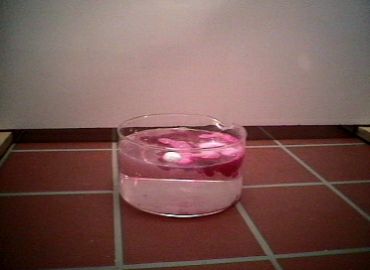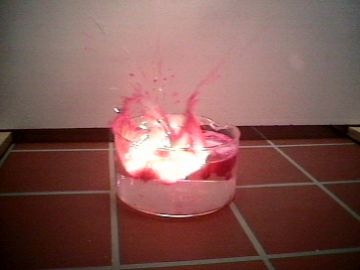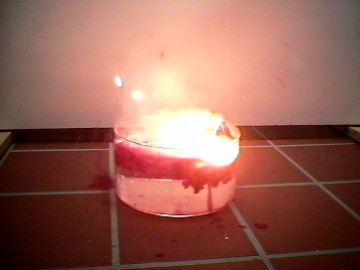



| 1. |  |
2. |  |
| Elemental sodium is placed in water | The sodium reacts with water and begins to melt | ||
| 3. |  |
4. |  |
| The hydrogen produced self-ignites... | ...and burns with a bright flame |
| Photo 1: | Freshly cut sodium has a metallic sheen. Within a few minutes, water in the air causes a layer of sodium hydroxide to develop on exposed surfaces, which is why elemental sodium is stored under hexane or a similar substance. The crystallized layer contains water that can be removed with a few drops of phenolphthalein solution (base indicator, see Chapter 12). |
| Photo 2: | Sodium reacts with water, here as an acid, according to:
2 Na + 2 H2O > 2 NaOH + H2 |
| The indicator shows that sodium hydroxide is produced: The solution changes to deep red. | |
| Photo 3: | The reaction is strongly exothermic: The piece of sodium melts (melting point of sodium: 97.8 °C). The heat transferred to the local environment ignites the hydrogen that is produced. |
| Photo 4: | The hydrogen burns with a bright flame. |
All the alkali metals react with water to produce elementary hydrogen and the corresponding alkali hydroxides. The reactivity increases with increasing periodic number. The metals rubidium and cesium explode when brought into contact with oxygen.
| Exercise 4.4.1.1: Solution: |
Give the melting point of sodium in degrees Kelvin and degrees Fahrenheit. |
| Exercise 4.4.1.2: Solution: |
Calculate the pressure present in a 100 dm3 container at 20 °C when 100 g sodium reacts with 100g water. |